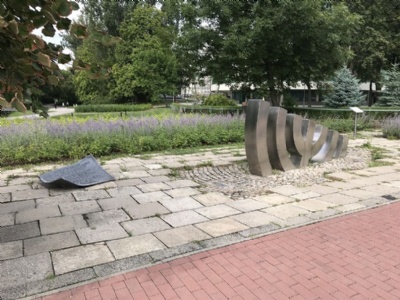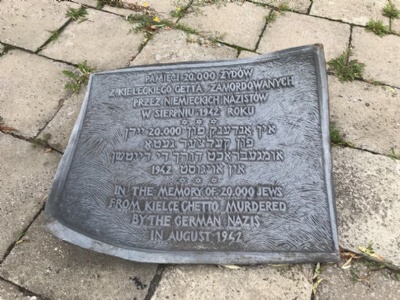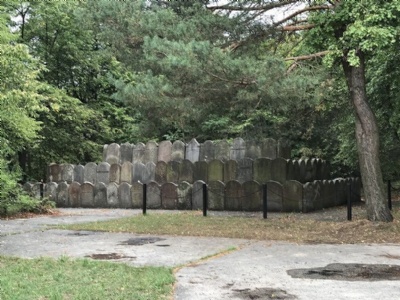Kielce Ghetto
About 100 kilometres north of Krakow lies the city Kielce. When the Germans invaded Poland in September, 1939, about 24,000 Jews lived in Kielce, which corresponded a third of Kielce’s population. Already on September 4, the Germans occupied Kielce and immediately imposed anti-Jewish measures. Jews were plundered, forced to slave labour and sporadic executions occurred. At the end of March 1941, the germans established a ghetto where the city’s Jews were forced to move. Former residents of what became the ghetto were forced to leave their homes.
The ghetto was surrounded by barbed wire fences and only with special permission could one leave or enter the ghetto. It was usually Jews who worked outside the ghetto that was allowed to leave the ghetto. A Jewish council was established that governed the ghetto on the basis of German directives. Lack of food, medicines and sanitary facilities contributed to the spread of starvation and diseases. The only way to alleviate hunger and disease was to smuggle in food and medicines. Those caught with contraband risked not only imprisonment, but also death penalty.
Between 20 and 24 August 1942, the Germans began to liquidate the ghetto. On pretext that the Jews would be evacuated to other places, they boarded trains, but instead they were brought to the newly established extermination camp Treblinka, about 300 kilometres northeast of Kielce. There they were murdered in the camp’s gas chamber. The Jews were only allowed to bring minimal baggage, all other things left behind were confiscated byt the germans. During these days, between 20,000 –21,000 Jews were deported, and another 1,200 Jews were murdered in the ghetto. About 2,000 Jews escaped deportation because they were selected as slave labor by the Germans. They were put in a small camp and forced to clean up the ghetto and sort out the Jewish property that had been left behind. In March 1943, this camp was liquidated and the prisoners were sent to other camps. After the war, about 150 Jews who had remained in hiding returned to Kielce.
Current status: Demolished with monument (2019).
Location: 50°52'29.66" N 20°37'40.43" E
Get there: Walk from central Kielce.
Follow up in books: Gilbert, Martin: The Holocaust: A History of the Jews of Europe During the Second World War (1987).




There is to my knowledge nothing left of the ghetto, and everything is rebuilt/newly built after the war. At the Jewish cemetery (Burial site) there are additional monuments dedicated to the Holocaust. For example a mass grave where Jewish children were shot and buried.